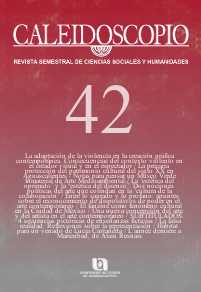A new conception of art and artist in contemporary art
DOI:
https://doi.org/10.33064/42crscsh2155Keywords:
Wharhol, pop art, Duchamp, art, artistAbstract
This article aims to show how pop artist Andy Warhol introduces a new conception of art and artist. The new model of the artist that Warhol incarnated is transversal: he dwells between mass culture and elite art and uses different disciplines beyond painting, such as design and advertising. This article also shows the differences between Warhol and Duchamp and points out how he makes his rupture (in the same way as avant-garde artists like him), within the model of modern art, whose tradition was always disruptive. In Warhol there is no spirit of confrontation, on the contrary, the american artist is accustomed to the society of the spectacle. Warhol does not break with painting, as Duchamp did (within the legitimizing tale of modern art to which Danto refers); on the contrary, he takes and integrates everything. That is his transversality as an artist.
Downloads
References
Benjamin, W. (1989). La obra de arte en la época de su reproductibilidad técnica. En W. Benjamin, Discursos ininterrumpidos I. Buenos Aires: Taurus.
Danto, A. C. (2010). Después del fin del arte. El arte contemporáneo y el linde de la historia. Barcelona: Paidós.
Danto, A. C. (2011a). La transfiguración del lugar común. Una filosofía del arte. Barcelona: Paidós.
Danto, A. C. (2011b). Andy Warhol. Barcelona: Paidós.
Duchamp, M. (2010). El acto creativo. En M. Duchamp, Cartas sobre el arte 1916-1956. Barcelona: Elba
Gay, P. (1997). Modernidad. La atracción de la herejía. De Baudelaire a Beckett. Barcelona: Paidós.
Fogle, D. (2017). Andy Warhol: Estrella oscura. En K. Brummel y D. Fogle (Eds.), Andy Warhol: estrella oscura [Catálogo de exposición]. Ciudad de México: Museo Jumex.
Gompertz, W. (2015). ¿Qué estás mirando? 150 años de arte moderno en un abrir y cerrar de ojos. México, D.F.: Taurus.
Kuhn, T.S. (2004). La estructura de las revoluciones científicas. México, D.F.: Fondo de Cultura Económica.
Kosuth, J. (1969). El arte después de la filosofía.
Kuspit, D. (2012). El fin del arte. Madrid: Akal.
Juanes, J. (2002). Más allá del arte conceptual. México, D.F.: CONCAULTA.
Juanes, J. (2009). Pop art y la sociedad del espectáculo. México, D.F.: UNAM.
Juanes, J. (2010). Territorios del Arte contemporáneo. México, D.F.: Ítaca.
Jiménez, J. (2010). Teoría del arte. Madrid: Editorial Tecnos.
Paz, O. (1990). La otra voz. Poesía y fin de siglo. México, D.F.: Seix Barral.
Paz, O. (1990). Los hijos del limo. Del romanticismo a la vanguardia. México, D.F.: Fondo de Cultura Económica.
Rion, I. (2017). Éramos famosos, y no existia nada que pudiera derrocarnos. No existía nada que pudiera derrocarnos porque éramos famosos. En K. Brummel y D. Fogle (Eds.), Andy Warhol: estrella oscura [Catálogo de exposición]. Ciudad de México: Museo Jumex.
Published
How to Cite
Issue
Section
License
Licencia Creative Commons Atribución-NoComercial-CompartirIgual 4.0 Internacional
El lector es libre de compartir o adaptar el material en cualquier medio o formato bajo las condiciones siguientes: (a) debe reconocer adecuadamente la autoría, proporcionar un enlace a la licencia e indicar si se han realizado cambios; (b) no puede utilizar el material para una finalidad comercial y (c) si remezcla, transforma o crea a partir del material, deberá difundir sus contribuciones bajo la misma licencia que el original.
Resumen de la licencia
https://creativecommons.org/licenses/by-nc-sa/4.0/deed.es_ES
Texto completo de la licencia
https://creativecommons.org/licenses/by-nc-sa/4.0/legalcode
Cada autor es responsable del contenido de su artículo. En el caso de un texto colectivo, el primer autor asume la responsabilidad intelectual de los resultados del proceso editorial; los autores son responsables de obtener la licencia de autor para reproducir materiales gráficos o fotográficos que pertenecen a terceros.
Los autores asumen plena responsabilidad en el caso de falsificación de datos o falta de autenticidad en la investigación. Se comprometen, también, a no reutilizar trabajos ya publicados, total o parcialmente, para presentarlos en otra publicación.
Estas condiciones aplican tanto a la versión impresa como a la versión electrónica de la revista.


















